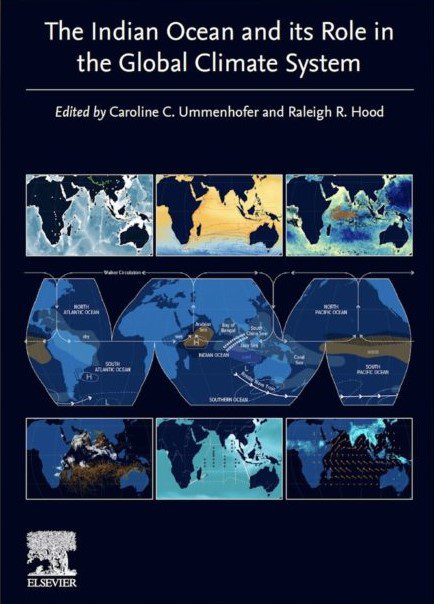New peer-reviewed book “The Indian Ocean and Its Role in the Global Climate System” published
The Indian Ocean represents one of the great frontiers in climate science and oceanography. Bordered by nearly 40 countries, and home to a third of the global population, changes to climate in this area of the world could have major societal and economic impacts. Currently, the Indian Ocean and its surrounding countries stand out globally as the region with the highest risk of natural hazards, with coastal communities vulnerable to weather and climate extremes. However, given its unique characteristics and the fact it has historically been understudied, we have limited knowledge about its inner workings.
In a new book published by Elsevier, The Indian Ocean and Its Role in the Global Climate System, an interdisciplinary team of experts take a deeper dive into recent warming trends and extreme events, such as marine heatwaves, ocean acidification, and deoxygenation. The book contains 20 peer-reviewed chapters, and more than 175 figures, 3,000 references, 100 educational resources and links directing readers to more in-depth information, and 100 glossary entries of key concepts.
Several oceanographers from the Woods Hole Oceanographic Institution (WHOI) Physical Oceanography Department were involved in the book: Associate Scientist Caroline Ummenhofer was one of the two editors of the book and led a chapter on the past, present, and future of the South Asian monsoon, as well as a chapter on regional and global impacts of the Indian Ocean. Assistant Scientist Viviane Menezes was a co-author on the Indian Ocean circulation chapter, and Senior Scientist Lisan Yu co-authored the Indian Ocean Observing System chapter.
“The Indian Ocean is particularly susceptible to human-induced climate change. Robust warming trends and pronounced changes in heat and freshwater are being observed there,” said one of the book’s editors, oceanographer Caroline Ummenhofer. “The Indian Ocean is unusual among tropical ocean basins. It has seasonal reversal of monsoon winds and ocean currents in turn. It’s also landlocked to the north, limiting the ability for tropical heat to escape to higher latitudes.”
“The advent of new technologies, an expanded observation system, and rapid advances in environmental predictions and forecasting capabilities in recent decades open new and exciting opportunities for improved environmental and climate risk management,” said Raleigh Hood, the book’s co-editor and biological oceanographer at the University of Maryland Center for Environmental Science. “In a region particularly vulnerable to changing conditions, it’s important to be collaborating and compiling this information. This book contains everything from the history of the region to all parts of the climate system including geology, hydrology, biogeochemistry, atmosphere, and oceanography.”
Contributions by more than 90 authors from around the world with expertise across a wide range of fields underpin the content of this textbook. Furthermore, all chapters were peer-reviewed by at least two experts in the field. The textbook identifies new understandings and technologies, providing stakeholders with relevant knowledge for more informed decision-making, encouraging students, practitioners, and researchers to overcome some of these pressing knowledge gaps.
The Indian Ocean and Its Role in the Global Climate System is available now. Published by Elsevier.

The Indian Ocean and Its Role in the Global Climate System takes a deep dive into warming trends and extreme weather events (Book cover design by Natalie Renier, ©Woods Hole Oceanographic Institution)
